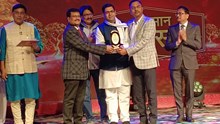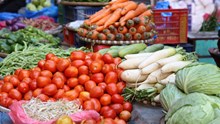
Commodity risk implies the uncertainties of future market values and of the size of the future income, caused due to adverse price fluctuation of commodities like grains, pulses, oilseeds etc. Various risks associated with agricultural commodities are:
-
Price Risk: Risk emerging due to adverse movements in the world prices, exchange rates, basis between local and world prices. This is often called as the price risk
-
Quantity risk occurs when the availability of commodities changes
-
Cost (input) risk occurs when changes to the price of commodities have a negative impact on business costs
-
Political risk occurs when compliance or regulation affects the price or availability of commodities
Market participants who are exposed to commodities risk are:
-
Growers, plantation companies, and mining companies, who are mainly producers often face price risk, input price risk or cost risk & quantity risk
-
Cooperatives, commercial traders and trait ants who are mainly buyers are exposed to price risk between the time period of up-country purchase buying and sale, (normally at the port) to an exporter.
-
Similar risk is associated with theexporters between purchase at the port and sale in the destination market.
-
Exporters also face political risks related with the export licenses or foreign exchange conversion.
-
Governments of various countries experience price and quantity risk related with the tax revenues. This generally happens where tax rates rise as commodity prices rise (case with metals and energy exports typically). These typesof risks also emerge in case support or other payments depend on the level of commodity prices.
Commodity basis is simply the difference between a local cash price and the relevant futures contract price for a specific time period. One can define commodity basis for a specific commodity basis as:
Basis = Cash Price - Futures Price
Where Cash Price is the cash price for a specific commodity at a given location, while Futures Price is the relevant futures price for that commodity. Example if spot price of Indore is Rs.7300/qtl and NCDEX July Soybean is trading at Rs.7332/qtl then the basis will be -32. It should be noted that commodity basis provides serves as an important tool for producers and agribusinesses for making production, forward pricing, hedging, and storage decisions.
For having better understanding of commodity risk/risk management, keep a watch on the commodity/agripedia sections.















